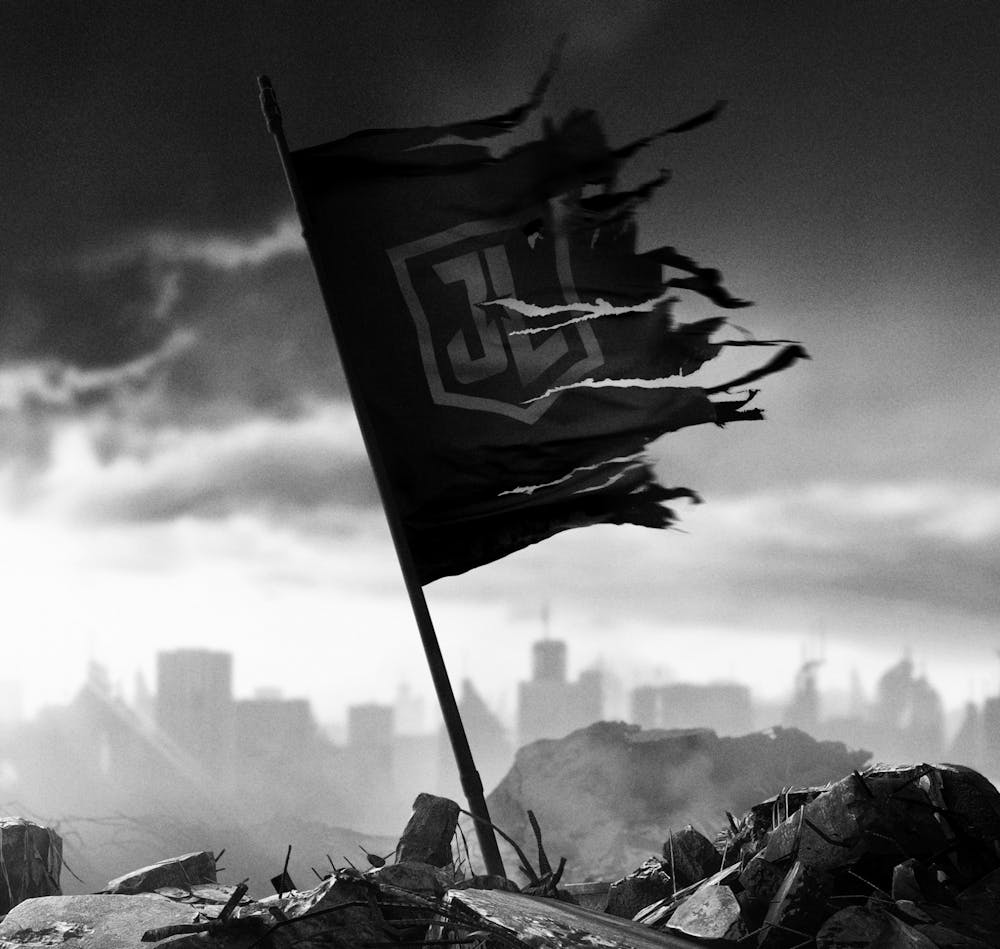Movie: Zack Snyder’s Justice League
Director: Zack Snyder
Starring: Ben Affleck, Gal Gadot, Jason Momoa, Henry Cavill, Ray Fisher, Ezra Miller
Studio: Warner Bros. Pictures, DC Films
Rating: 8.7/10
The release of “Zack Snyder’s Justice League” has seen one of the rockiest production processes in recent memory.
After watching 2017’s critically and commercially panned “Justice League”, fans realized the two-hour overly comedic superhero team-up was far from what Zack Snyder, the film’s director, originally had in mind.
Snyder stepped down during post-production due to his daughter’s death, so the film director Joss Whedon was brought onboard. Whedon, who previously directed “The Avengers”, took a more lighthearted approach to “Justice League” to appease a wider audience, unlike its predecessor, “Batman vs Superman: Dawn of Justice.”
Although #releasethesnydercut has been a movement since 2017, many thought Snyder’s vision would never come to light because it would cost a lot of money to make such a movie. But HBO Max gave Snyder the resources to make the film he envisioned, one without any of Whedon’s changed footage.
From the opening scene, it becomes clear that “Zack Snyder’s Justice League” is far from the “Justice League” viewers saw in 2017. Picking up immediately after the ending to “Batman vs Superman: Dawn of Justice,” this R-rated cut contains the same general plot — saving the world from a dangerous evil — but with much more violence, blood and even a surprising “f---” uttered by Batman.
While many may scoff at the film’s 242-minute runtime, which came in at over twice the original, Snyder does not leave much room for filler, providing more detail and subplots across the film that flesh out the characters and pave the way for potential sequels.
One of the film’s most successful changes came in Ray Fisher’s performance as Cyborg, whose arc was heavily cut in the original film. His revised character contains a solid backstory, with emotional scenes that give him depth and a significant place in the film's plot. Fans also get a chance to see Fisher’s acting chops.
Ezra Miller plays the Flash and also has an upgraded role this time around, with scenes showcasing the magnitude of his powers, particularly in the finale, and displaying his fun yet heartfelt personality, a staple of his character in comic books.
The best addition to this version comes from the film's villains. While Whedon’s version used Steppenwolf as the main antagonist, Snyder introduces his master, Darkseid, as the true big bad, who was strangely given no direct mention in the theatrical cut, despite being used in Snyder's version before he stepped down.
Played by Ray Porter, Darkseid acts as the DC equivalent to “Avengers'' franchise villain Thanos. But unlike Thanos’ overall intent to make the world balanced, Darkseid is a ruthless destroyer, whose only intent is to find the anti-life equation, which can grant him control over all of existence, giving the Justice League a dangerously formidable opponent.
Much of the film’s scenes and subplots with smaller characters are meant to act as a setup for how Snyder would have made future films — which he has publicly stated will likely never come to fruition. No scene better shows that than a nightmare/vision had by Batman, played by Ben Affleck, toward the end of the film.
This scene expands heavily upon the dream sequence from “Batman vs. Superman: Dawn of Justice”, and gives the world a glimpse at what the DC Extended Universe may have been like had it been guided by Snyder. Hardcore DC Comics fans will find much to appreciate here, with many fan-favorite characters making surprise appearances.
But not every change in the film is plot-based. Snyder also revamped stylistic elements like the color palette, background score and aspect ratio. The theatrical release modified the aspect ratio to 16:9, but Snyder changed it back to 4:3 to fit the way the film had been formatted when he originally worked on it.
More noticeably, Snyder also uses a significantly darker color palette to help intensify the story and raise the stakes in many scenes. This theme is continued in Superman’s character design post-resurrection, whose look has changed with a more comic-accurate black suit.
Snyder’s decision to use composer JunkieXL again for the film’s soundtrack — unlike Whedon who added Danny Elfman in the theatrical cut to give it a lighter tone — worked very well, giving the film a darker, more intense soundtrack — complete with ample drums — to evoke the suspense of the scenes.
While most of the changes are quite welcome, the film does eventually begin to drag, with some scenes being bloated with content. Many characters, such as J.K. Simmons’ Jim Gordon, feels underused, as if they were thrown in just to show the character on the screen.
The introductory Wonder Woman and Aquaman scenes, played by Gal Gadot and Jason Momoa respectively, are also much longer than they were theatrically, and although the greater action and detail adds an epic tone to the film, they nonetheless drag on for far too long and get a little repetitive by the time the scene switches.
This film will likely go down as a “what could have been” rather than a “what’s to come,” which is a disappointment. But “Zack Snyder’s Justice League” is worth the watch, giving fans the superior, more complete version of DC’s hallmark superteam they’ve wanted since 2017.
Alex Falter is the assistant arts editor and can be reached at alex.falter@ubspectrum.com

Alex Falter is a senior arts editor at The Spectrum.





